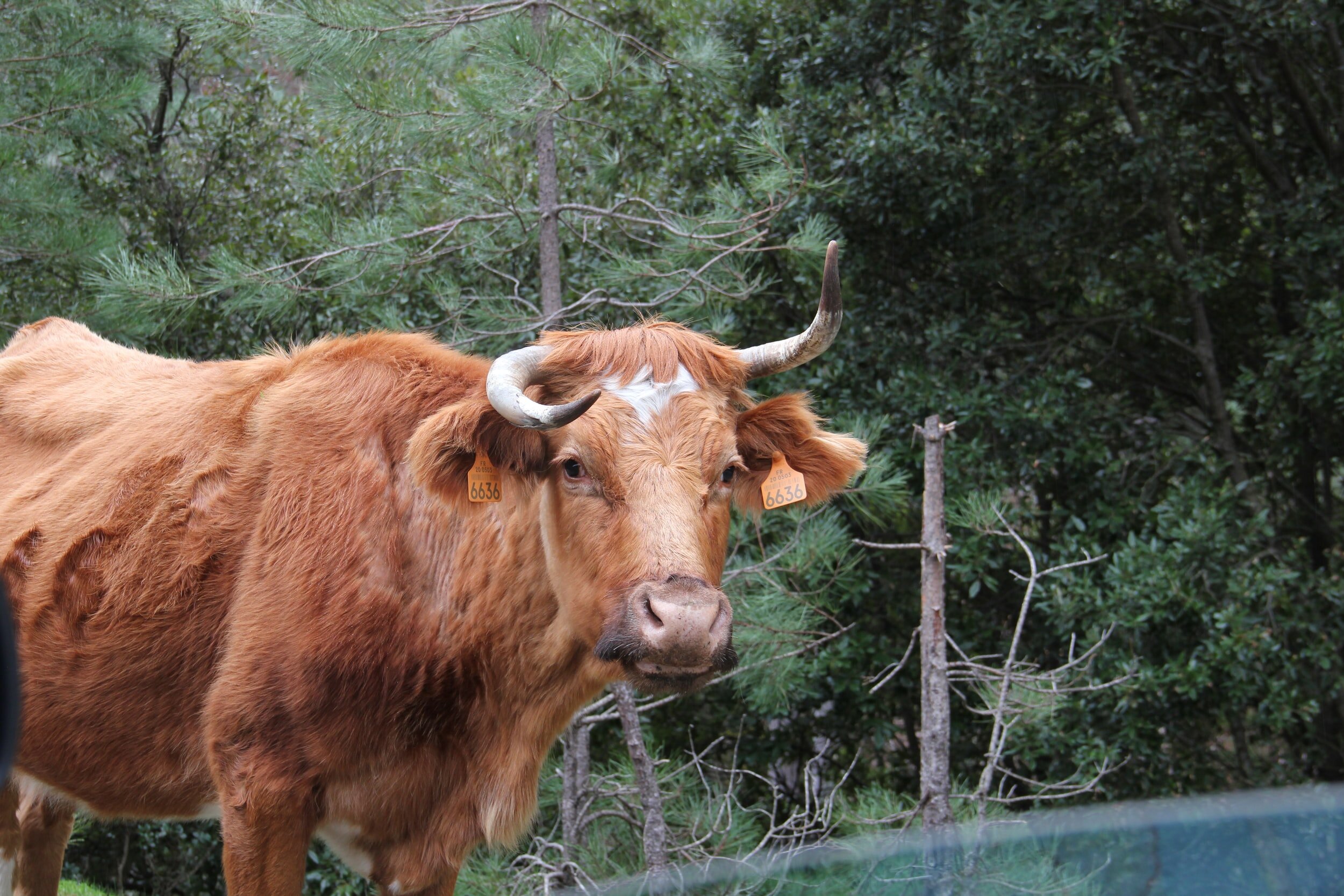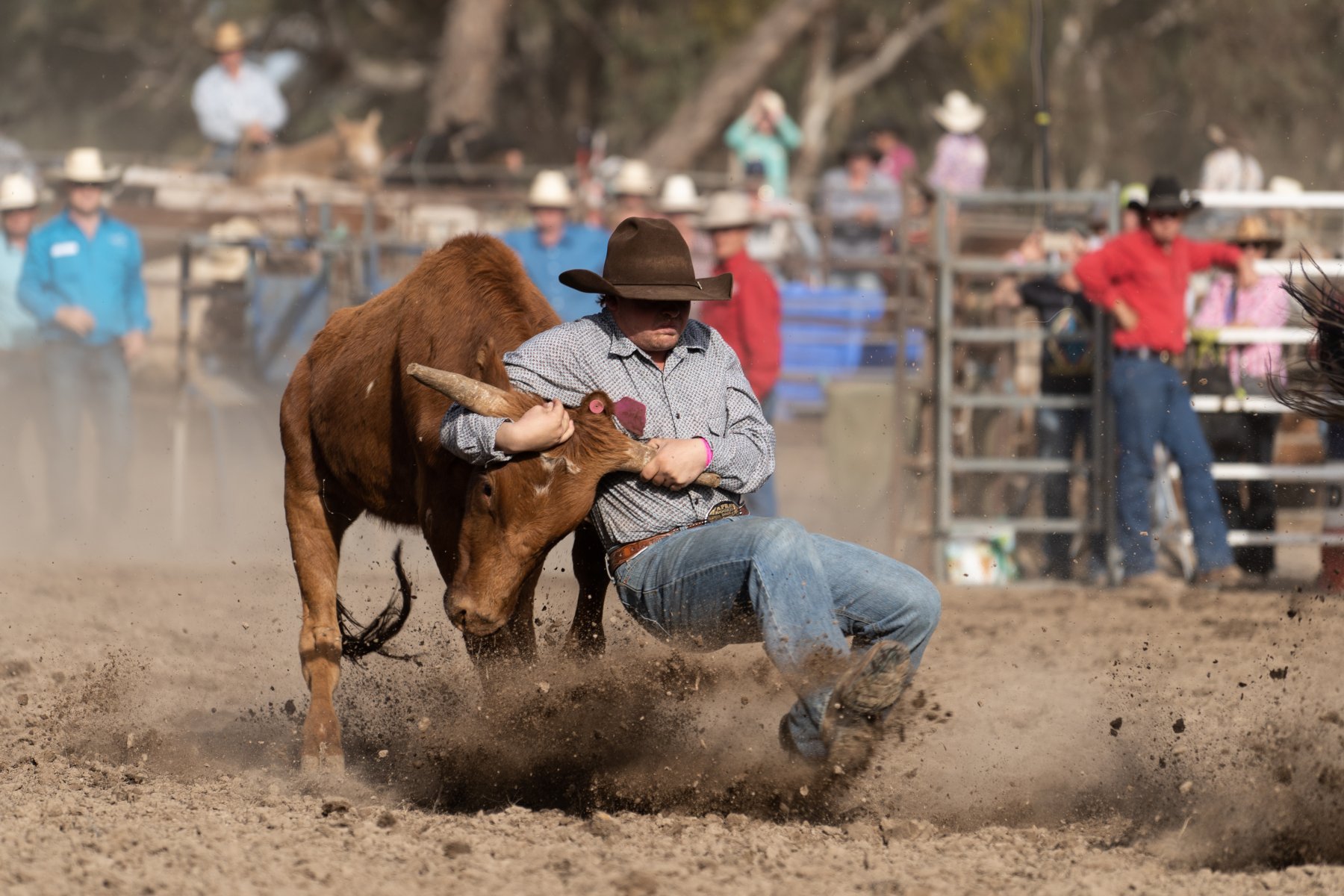
Rodeos
Rodeos are made up of four major events - bull riding, bronc riding, steer wrestling, and calf roping. These spectator “sports” are terrifying for the animals and can lead to severe stress, injury, and even death.
The Events
Bull Riding
Bull riding is when a bull is released from a bucking chute with a rider holding on with one hand, attempting to stay on their back for as long as possible as the bull bucks.
Credit: Animals Uncovered
Bronc Riding
Bronc-riding is similar to bull riding, where a bronc is released from a bucking cute while a contestant attempts to stay on the bucking horse for eight seconds.
Credit: Animals Uncovered
Calf Roping
Calf roping involves releasing a young calf into the arena, while a roper on horseback chases and lassos the calf by throwing a rope over their head. The calf is jerked to a stop and the rider has 30 seconds to jump off the horse, throw the calf onto their back, and tie three of their legs together [1].
Credit: Animal Liberation QLD
Steer Wrestling
Steer wrestling involves releasing a full-grown steer into an arena, while a mounted cowboy pursues them, lassoing them by their horns. The rider then dismounts and wrestles the steer to the ground, to tie up their legs [2].
Credit: Animals Uncovered
Team Penning
Team Penning is a timed event that requires three riders on horses to separate three specific calves out of a herd and into a pen on the other side of the arena, in less than 60 seconds. The objective of being the quickest team to pen all three cows.
The Issues
Physical Abuse
The bulls are tormented to provoke them into being “aggressive”. Whilst in the chute, the bulls are shocked with electric prodders, jabbed with spurs, kicked and hit, have their tails twisted and pulled, and fingers shoved up their nose [3]. The physical abuse causes the bulls to respond aggressively. In addition to this, they have a flank strap tied tightly around their sensitive belly (not genitals) and a rider on their back. As the gate opens, the bull “bucks” in an attempt to dislodge the rider and remove the uncomfortable flank strap. Once again, their reaction to being ridden and abused is the same as if they were being attacked by a predator. It is not uncommon to see bulls hurl themselves into solid objects in an attempt to rid the rider and escape the situation.
Stress, Injuries, and Death
Being prey animals, calves, steers, bulls, and horses feel safest when with their herd. For these events, the animals are separated, and feel like they are being chased or attacked by a “predator”.
In NSW, it is not required to have a veterinarian on-site, meaning that some bulls have been forced to walk out of the arena and are loaded onto a truck, to be transported elsewhere to be euthanised [4]. Although the industry claims life-threatening injuries as uncommon*, any event that risks an animals life and subjects them to unnecessary stress has no place in society.
*There is no independent collation and review of injury records, making it impossible to know just how prevalent injuries are.
Calves commonly sustain injuries, such as damage to their windpipe and soft tissues, experience choking, bruising, and broken or fractured bones, backs, and necks [1]. It is also not uncommon for calves to be mis-roped, where the lasso goes around their face or their body, which can pull their body in awkward positions. Calves and steers have been known to run headfirst into the arena walls in an attempt to escape.
In addition to the stress, steers suffer from the extremely rough handling. Like the calves, steers also suffer from damage to their windpipe, bruising, injuries of the neck, muscle and tendons, and broken bones [5].
Credit: Animal Liberation QLD
The bulls weigh between 700-1,200kgs. Vigorous bucking can cause muscle soreness or tears, abrasions, bruises, and broken bones, and injuries often result them being killed as these injuries render them useless for future events.
Bucking is a bulls’ instinctive response to fear, discomfort, and pain. Other common signs of stress and fear in bulls are shown through their facial expressions, excessive drooling of saliva, an open mouth, and flared nostrils. Some bulls even charge at the riders or the staff inside the arena, highlighting their fear and distress.
Credit: Animals Uncovered
Transport and confinement
Animals involved in the rodeo are transported for long distances in trucks when moving from one event to another. Once they arrive at the destination, they are kept in small pens, unable to graze as they naturally would. The animals are often not given any shelter and are left to withstand the elements.
Credit: Animals Uncovered
Life After the Rodeo
Breeding
“Successful” bulls – the ones who buck more – can often used for breeding future generations of bulls [6 PDF]. This means they may be “milked” by a worker, in other words, manually forced to ejaculate into a collection bag, so that their sperm can be artificially inseminated into a female. To learn more about this, read our article on Cattle Farming.
Slaughter
After the animals have served their assigned purpose, they will be sent to slaughter and replaced by new animals.
Dr C.G. Haber, a veterinarian who spent 30 years as a federal meat inspector, worked in slaughterhouses in the United States and saw many animals discarded from rodeos and sold for slaughter. He described the animals as being “so extensively bruised that the only areas in which the skin was attached (to the flesh) were the head, neck, leg, and belly. “I have seen animals with six to eight ribs broken from the spine and at times, puncturing the lungs. I have seen as much as two to three gallons of free blood accumulated under the detached skin.” These injuries are a result of animals being thrown in calf-roping events or being jumped on from atop horses during steer wrestling [7].
Bull head in Gretna slaughterhouse
Credit: Animal Liberation
What can you do?
As consumers, we hold the power to end the suffering of animals used for entertainment. Without our money, these events and activities would simply cease to exist, freeing the animals from a lifetime of mistreatment and misery.









